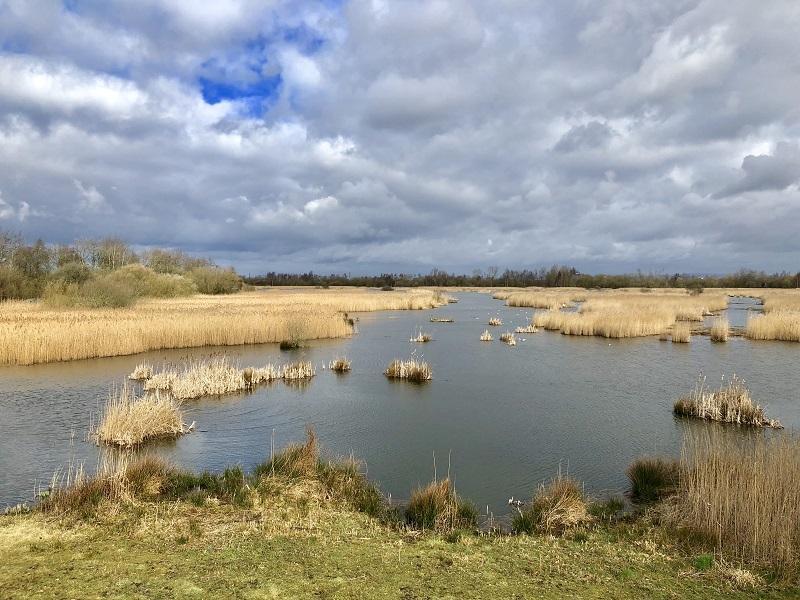
R8WoolstonEyesDynamicWetlandsReport.pdf (carbonlandscape.org.uk)
The project at Woolston Eyes to create a dynamic wetland has maximised the wildlife potential of this post-industrial landscape! The habitat has been restored to a condition which will exceed its heyday back in the 1970s and 80s, which is fantastic!
Achievements:
- 40 hectares of dynamic wetland
- 2 wetland lagoons
- 2 hides restored/created
- 5 new signs installed
- 2 visitor trails installed and access to site improved
- 5 training workshops delivered
- 30 people attending workshops and providing positive feedback
- 8 volunteers engaged who were involved with weekly habitat management days
- 400 volunteer days delivered
The aim at Woolston Eyes was to create a new dynamic wetland, created within a working dredging site, including two new wetland lagoons, resulting in a total of three wetlands “cells”.
The cells are managed by controlling water levels in a rotational manner that mimics the historic usage of the site by Manchester Ship Canal Company, as this site straddles this historic Canal. Each cell operates at one of the different stages of the lifecycle of a wetland, thus creating a site rich in habitat diversity, including scrub, willow, wet scrub woodland, reed-beds and open water.
Taking this innovative approach to wetland creation and management has helped to ensure the long term sustainability of these wetlands, and provide a long term refuge for the large populations of birds which use and inhabit this site.
This huge new wetland nature reserve has slowly emerged and has attracted hundreds of water-birds, including Red Listed species such as Black-necked Grebe and Pochard, as well as large numbers of Odonata and Amphibians.
Into the future
Countryside stewardship funding of £140,000 will ensure the wetland is maintained in optimum condition. A further £40,000 will enable new wet woodland for willow tits. Through volunteering and engagement with a variety of structured wildlife surveys, local people will continue to be offered the opportunity for developing specific skills in these areas, as well as connecting with an important local resource. There will be a formal launch in the future.
Contact the Woolston Eyes Conservation Group
Web: www.woolstoneyes.com
